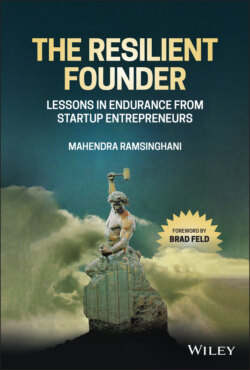Читать книгу The Resilient Founder - Mahendra Ramsinghani - Страница 28
What Drives Us to the Cliff – Is It Shame, Envy, or Powerlessness?
ОглавлениеWe never would fully know the range of emotions that drives founders to the cliff. One can speculate, a bit too simplistically, that a faltering self-image is one factor – that we no longer see ourselves as brave, bold, and skilled. We are disillusioned with our inabilities, expectations, and the world's incessant demands. We pull over to the side of the road. The state of helplessness spirals, often oscillating between disappointment and anger. We become harsh on our own selves. Suicide becomes a form of protest, revenge, and/or appeal.
In a rapid-paced world, the fastest runner, the unicorn-bagging CEO, becomes the hero. But very few get there, and for the vast majority who don't, the self-image crumbles. “This state of shame and envy is followed by self-destructive impulses … the suffering ego wants to do away with the self in order to wipe out the offending, disappointing reality of failure … the self-destructive impulses are to be understood here as the expression of narcissistic rage,” writes psychoanalyst Heinz Kohut. Founders have to be mildly narcissistic, and believe that their images, their views can change the world. When faced with resistance, this perspective and energy turns dark, angry, a rage when it does not meet its self-appointed goals.
Those who may have started off on the hero's journey may soon feel powerless against the stagnant forces of the market adoption risks, technology stasis, and fickleness of investors, who were chasing the next big thing. Mark probably felt weak and helpless. And his identity was so attached to his start-up, unable to separate the two, he decided to end it all.
